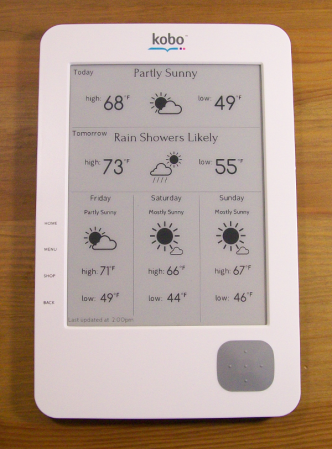The Kobo e-reader has been hacked for a while now. It’s pretty easy to enable telnet access by modifying some files. Once [Kevin] was able to telnet into the device and draw to the display, he created the Kobo Wifi Weather Forecast. This hack was inspired by the Kindle weather display that we discussed in the past, but this version runs entirely on the Kobo.
The weather report software is written in Python using the pygame library. After loading the software package onto a Kobo, a few commands are run over telnet to set up Python and run the display. Since Python and pygame run on the Kobo, it allows for direct access to the e-ink display.
There’s a lot of possibilities for a internet connected e-ink device running custom graphics code. It’s asking to be turned into any kind of display you can imagine. What ideas do you have for a custom e-ink display? Let us know in the comments.













